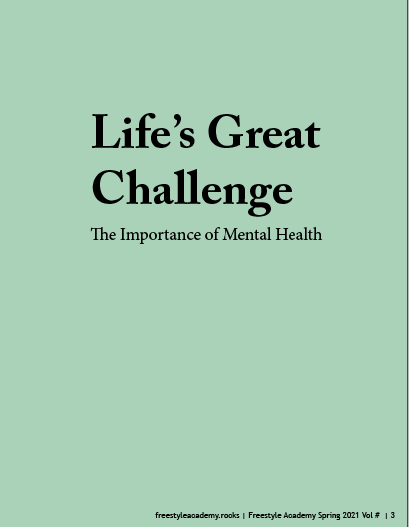Introduction
“How would one creatively and truthfully portray a significant idea, person, or topic within the local community?”
The third unit at Freestyle Academy was the Documentary unit. We were challenged with discovering and uncovering interesting stories from the people around the area. My partner and I decided to focus on mental health. Mental Health is a very important topic, and shining light on stories about people who have struggled and overcome troubles with their mental health can inspire others to do the same.
This unit puts an emphasis on narative-style journalism, creating stories through people’s experiences, backgrounds, identities, and ideas.
Interviewees
We interviewed different people with all kinds of different experiences, identities, and backgrounds from around the Mountain View and Los Altos area. We wanted to know what their thoughts on mental health were.
Sarah Alvarado

Sarah Alvarado, other wisely known as Ms. Alvarado, is a history teacher who worked at Los Altos High School for many years. She became a history teacher after having many great and influential history teachers throughout her years in high and middle school. She had gone through a hard life when she was younger, and had persevered through breast cancer treatment in 2021. Her perspective on mental health is unique from others, emphasizing the importance of talking to others about the problems you have.
Alex Lynn
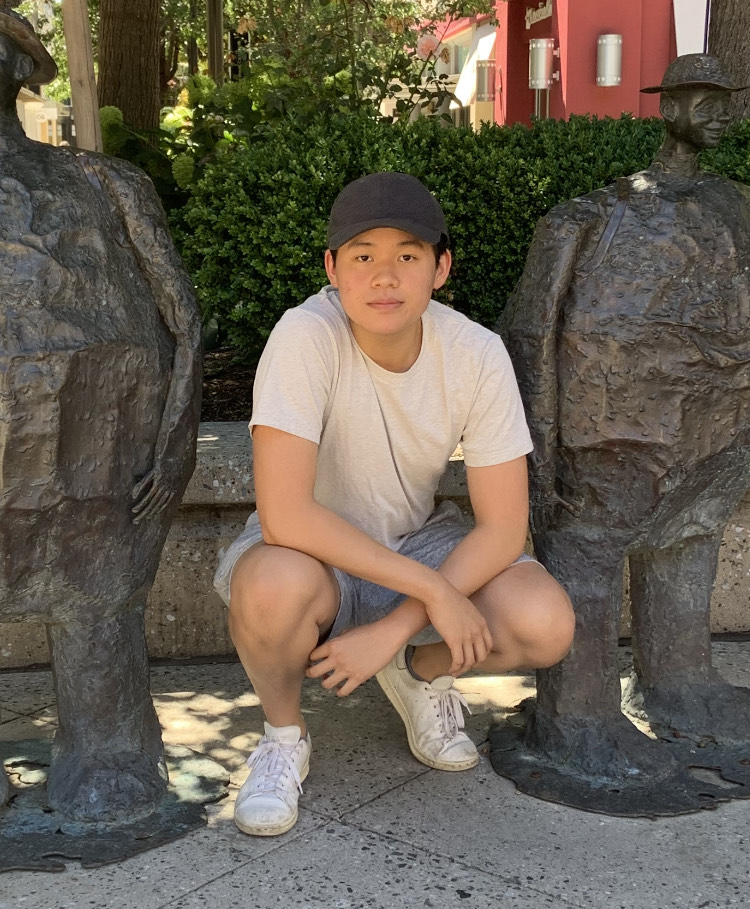
Alex is a student currently attending Los Altos High School. He moved to the Silicon Valley area from Pittsburg Pennsylvania last year, becoming a very close friend of mine. Alex tends to have a more optimistic look on life, but has periods of time when his mental health takes a downturn. He thinks that mental health is deeply intwined with physical health, and places physical health as a priority.
Ken Daxer
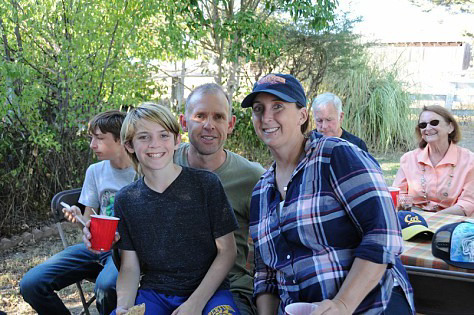
Ken is a father of two sons who is a patent technologist. He has been living in the Silicon Valley ever since he was young, and has tried his best to stay optimistic and happy his entire life. However, his wife was diagnosed with a terminal illness that led to her passing. No matter what happens, Ken will always try to stay positive, although it was hard to come to terms with her passing. Even though it is sad that she is no longer with him, it is important to cherish and celebrate the memories you made with loved ones.
Amanda Jernigan

Amanda is a student of Mountain View High School, and close friend of mine. Amanda has been struggling with mental health throughout her entire life, and has persevered so far. She was recently diagnosed with major depressive order, and has been meeting psychiatrists often to help with her mental health. She always has a smile on her face, and makes the people around her happy. Most of her stress comes from school pressures, but she tries to make the best of her situation by doing things that make her happy.
English
For English class, I wrote a profile article about my history teacher, Ms Alvarado, and her experience mental health throughout her life. I decided to focus and write about her because of her unique perspective and experiences that give her an insight that many people overlook.
Film Documentary
For our film class, my classmates and I learned how to create documentary style films. We had to learn the various techniques with making an entertaining, as well as informative, documentary film.
Techniques we learned include:
- Lighting of the face
- Background composition
- Rule of thirds
- Eye lines
- Dual camera set up (close up / medium shot)
- Preparation for interviews
- Collecting B roll
- Editing in documentary style
Mockumentary – Monkey Man Unleashed
For our first project in the documentary unit, we were tasked with creating small groups to create “Mockumentaries”, essentially a fake documentary. Our task was purposely left vague to express our creativity, but we used this project as practice for our real documentary. We used all the techniques from above in our mockumentary project.
I came up with an idea for a mockumentary about a deranged monkey roaming the silicon valley, who harasses the people of the area. We would interview the people who got had experiences with the monkey man, as well as a guest appearance from the Monkey Man himself at the very end! I got my entire film class of 6 to agree to work on this project together, and I think the final mockumentary came out pretty well!
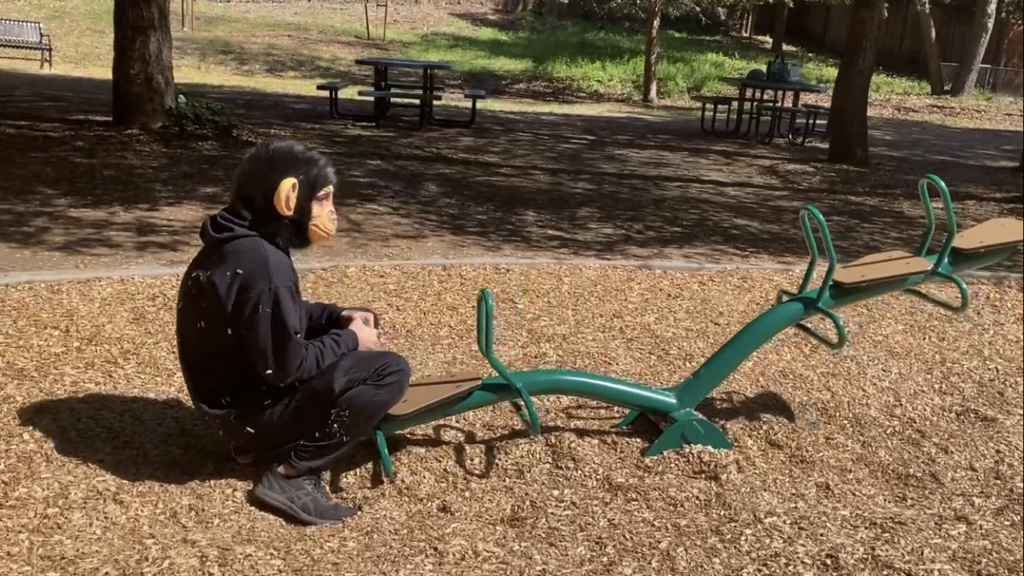



Some screenshots and photos I took during the filming of Monkey Man Unleashed
I was the director and editor of the movie, putting everyone’s interviews together to make a compelling story. The addition of new ideas and storylines from my film classmates that made the mockumentary much better than it would have been if I had worked on it on my own.
Burnout – Documentary
After acquiring the skills and techniques from the mockumentary unit, we began our larger project for the Documentary unit. My partner and I decided on the topic of mental health. We interviewed a menagerie of different people with different and unique perspectives influenced by their unique experiences with Mental Health.
The actual interviews are the most important process of the documentary, and we had to make sure the information we got was good. For every interview, we had to come with prepared questions, as well as camera set ups which included dual cameras for different angles and lenses, as well as a chair for the interviewee to sit on. Before the interview began, we had to make sure the that the background composition was not distracting, so moving objects or the interviewee was essential to make the different angles visually appealing.
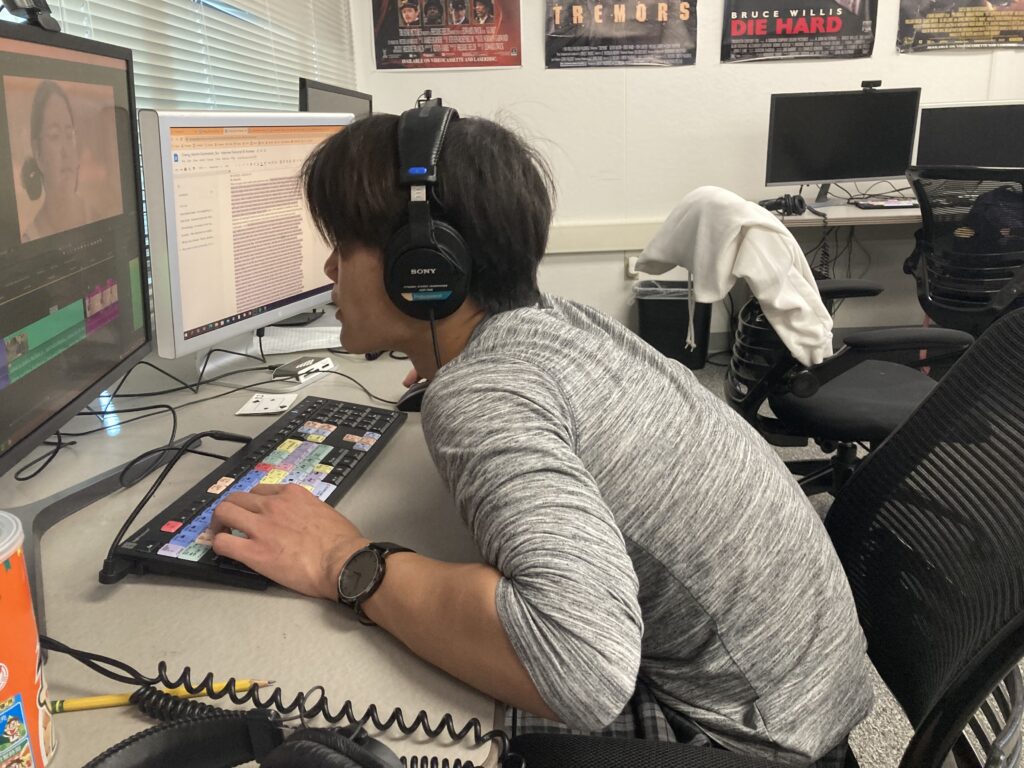
After the interviews were finished, the longest process began: editing. I greatly underestimated how long editing takes, especially for documentaries. For most films, such as narratives, a plan is already set in place that you could execute relatively easily in the editing process. But for documentaries there is no pre set plan or storyline to follow, and you need to create a coherent story that interweaves the interviews and the relevant topics to have a smooth flow of ideas. My partner and I split the editing down the middle, each working at the same time. By the end, the editing process took around 15 total hours of in class editing. But it was well worth it, and our efforts were rewarded with a coherent documentary that told compelling stories of the different interviewees, as well as their unique perspectives on the topic of mental health.
Design
Reflection
Looking back on this project, I didn’t enjoy it as much as I did the narrative unit, but I valued that skills I learned from this unit.

